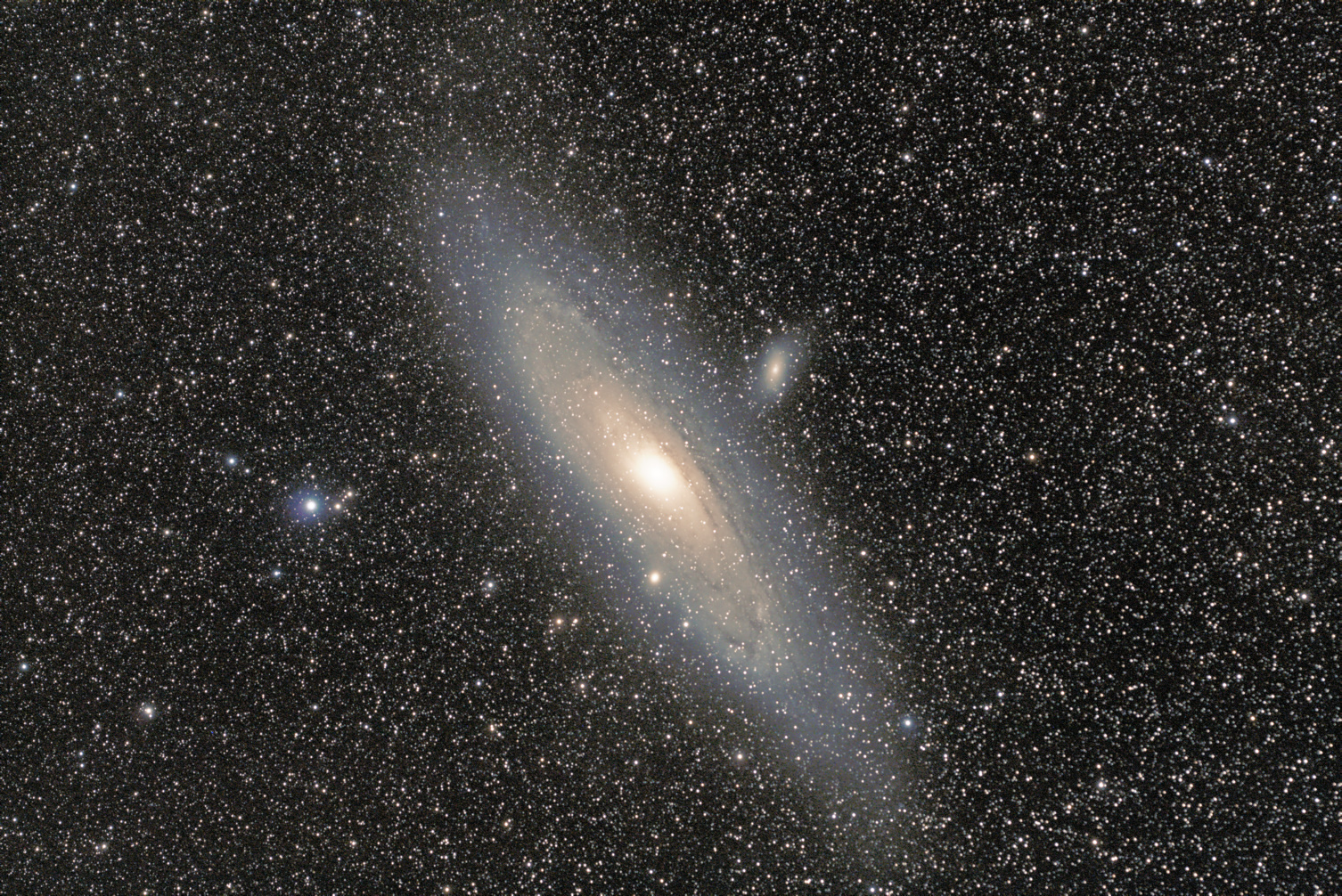 Science Daily: Uranus
Science Daily: Uranus
- New images reveal what Neptune and Uranus really look like January 5, 2024
- Ringing in the holidays with ringed planet Uranus December 19, 2023
 Science Daily: Pluto
Science Daily: Pluto
- How Pluto got its heart April 15, 2024
- Evidence of geothermal activity within icy dwarf planets February 15, 2024
 Science Daily: Kuiper Belt
Science Daily: Kuiper Belt
- How Pluto got its heart April 15, 2024
- Evidence of geothermal activity within icy dwarf planets February 15, 2024
I really should have spent more time per image, but I was so intoxicated with the dark skies that I jumped from object to object. My “neighbors” for the week were Bruce and Jill with Bruce being the imager, and he tended to do imaging of no more than two objects each night. But the first night I kind of went crazy and skipped around.
Even so, this image of M31 is definitely way better than what I did a decade ago from Missouri. Total exposure here is a mere 1 hour (20 x 180 sec). In this scaled down image, the noise is not apparent, but this could have used a lot more exposure time. I hope to go back and try again now that it’s coming up a bit earlier so maybe I can spend most of a night on it.

| Object | M31, M32, M110, others |
| Camera | Hap Griffin Modified Canon T6i |
| Lens/Scope | William Optics RedCat 51, 250mm FL, f/4.9 |
| Exposure | 60 minutes (20 x 3 min) @ ISO 800 |
| Location | Cherry Springs State Park, PA |
| Processing | PixInsight for calibration and initial histogram adjustment PWP8 for additional color and histogram adjustments |
I have to think that I don’t quite understand yet how to do proper calibration in PixInsight (well, that’s at least partially self evident in that I used PWP8 to do additional tweaking). Most images of M31 show a clear bluish tint on the outer parts of the disk, as you see in this. But the initial image when I finishing calibrations and stacking is a pretty uniform yellowish, except for that bright star in the left center (nu Andromedae, a binary composed of a luminous B5 and an F8). It took a lot of work to bring out the bluish tint. My 2009 image was not calibrated at all, and it used a different camera (a modified Canon XTi/350D with a Borg 45ED for the scope, similar focal length), but it showed a bluish/greenish tint to the disk without much work at all.
Written by Roland Roberts
Search
.Archives
- May 2024 (1)
- April 2024 (3)
- September 2022 (5)
- April 2022 (1)
- January 2022 (3)
- December 2021 (4)
- September 2021 (3)
- July 2021 (1)
- January 2021 (1)
- November 2020 (2)
- October 2020 (2)
- September 2020 (2)
- August 2020 (5)
- July 2020 (1)
- November 2019 (2)
- September 2019 (1)
- August 2019 (2)
- September 2017 (1)
- August 2017 (1)
- September 2015 (3)
- August 2015 (2)
- June 2015 (5)
- May 2015 (3)
- May 2013 (2)
- January 2013 (1)
- December 2012 (2)
- September 2012 (1)
- June 2012 (1)
- May 2012 (1)
- October 2011 (2)
- September 2011 (2)
- April 2011 (2)
- March 2011 (10)
- January 2011 (8)
- November 2010 (2)
- October 2010 (1)
- September 2010 (3)
- August 2010 (2)
- July 2010 (1)
- June 2010 (1)
- April 2010 (3)
- February 2010 (3)
- January 2010 (3)
- December 2009 (6)
- November 2009 (3)
- October 2009 (7)
- September 2009 (8)
- August 2009 (4)
- July 2009 (1)
- June 2009 (2)
- May 2009 (2)
- April 2009 (7)
- March 2009 (1)
- February 2009 (6)
- January 2009 (4)
- December 2008 (4)
- November 2008 (3)
- October 2008 (11)
- September 2008 (4)
- August 2008 (5)
- July 2008 (5)
- June 2008 (2)
- April 2008 (4)
- March 2008 (18)
- February 2008 (9)
- November 2007 (1)
- October 2007 (3)
- July 2007 (3)
- April 2007 (1)
- March 2007 (6)
- February 2007 (3)
- December 2006 (3)
- October 2006 (4)
- September 2006 (1)
- July 2006 (5)
- May 2006 (10)
- April 2006 (9)
